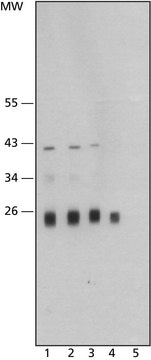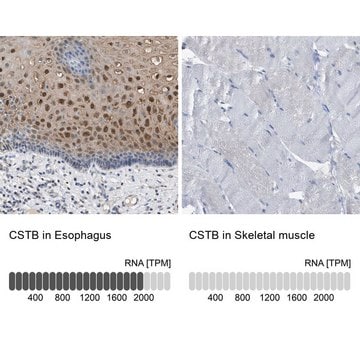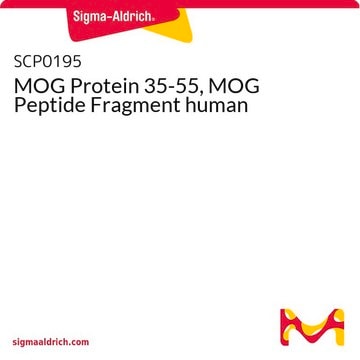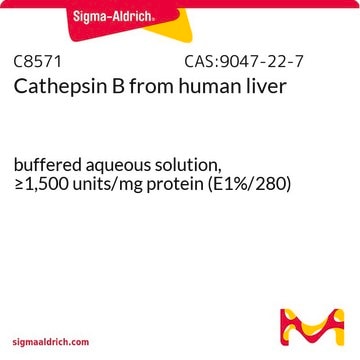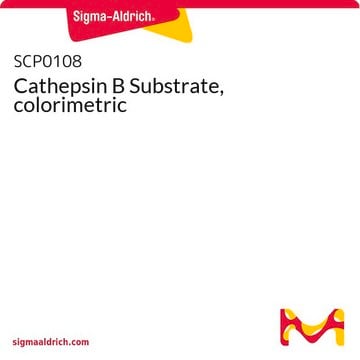C6243
Monoclonal Anti- Cathepsin B in Maus hergestellte Antikörper
clone CB59-4B11, purified from hybridoma cell culture
Synonym(e):
Anti-APPS, Anti-CPSB, Anti-RECEUP
About This Item
Empfohlene Produkte
Biologische Quelle
mouse
Konjugat
unconjugated
Antikörperform
purified immunoglobulin
Antikörper-Produkttyp
primary antibodies
Klon
CB59-4B11, monoclonal
Form
buffered aqueous solution
Mol-Gew.
antigen ~25 kDa
Speziesreaktivität
rat, human
Konzentration
~1.5 mg/mL
Methode(n)
immunohistochemistry: suitable
indirect ELISA: suitable
western blot: 4-8 μg/mL using HCT-116 cells.
Isotyp
IgG1
UniProt-Hinterlegungsnummer
Versandbedingung
dry ice
Lagertemp.
−20°C
Posttranslationale Modifikation Target
unmodified
Angaben zum Gen
human ... CTSB(1508)
rat ... CTSB(64529)
Verwandte Kategorien
Allgemeine Beschreibung
Immunogen
Anwendung
Biochem./physiol. Wirkung
Monoclonal Anti-Cathepsin B specifically recognizes human1 and rat1 cathepsin B (~ 25 kDa). The antibody epitope resides within the peptide sequence EPGYSP which corresponds to amino acids 212-217 of human cathepsin B. The antibody does not cross react with the closely related lysosomal cysteine proteases: cathepsins L, H, K, S, V, and W.
Cathepsins significantly takes part in the immune response, by processing antigens into peptides for its presentation through MHC class II molecules.
Physikalische Form
Haftungsausschluss
Not finding the right product?
Try our Produkt-Auswahlhilfe.
Empfehlung
Ähnliches Produkt
Lagerklassenschlüssel
10 - Combustible liquids
WGK
WGK 1
Flammpunkt (°F)
Not applicable
Flammpunkt (°C)
Not applicable
Analysenzertifikate (COA)
Suchen Sie nach Analysenzertifikate (COA), indem Sie die Lot-/Chargennummer des Produkts eingeben. Lot- und Chargennummern sind auf dem Produktetikett hinter den Wörtern ‘Lot’ oder ‘Batch’ (Lot oder Charge) zu finden.
Besitzen Sie dieses Produkt bereits?
In der Dokumentenbibliothek finden Sie die Dokumentation zu den Produkten, die Sie kürzlich erworben haben.
Cancer Invasion
Leishmania amazonensis-Infected Macrophages
the Endo- and Exopeptidase Activities of Cathepsin B
Unser Team von Wissenschaftlern verfügt über Erfahrung in allen Forschungsbereichen einschließlich Life Science, Materialwissenschaften, chemischer Synthese, Chromatographie, Analytik und vielen mehr..
Setzen Sie sich mit dem technischen Dienst in Verbindung.